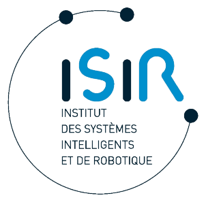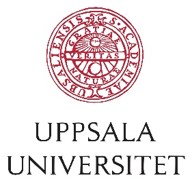Keynote

Catherine Pelachaud
CNRS-LTCI, Telecom-ParisTech, Paris, France
Catherine Pelachaud is a Director of Research at CNRS in the laboratory LTCI, TELECOM ParisTech. She participated to the elaboration of the first embodied conversation agent system, GestureJack, with Justine Cassell, Norman Badler and Mark Steedman when being a post-doctorate at the University of Pennsylvania. She went to Università di Roma "La Sapienza” with a Marie-Curie CEE scholarship. Her research interest includes embodied conversational agent, nonverbal communication (face, gaze, and gesture), expressive behaviors and socio-emotional agents. With her research team, she has been developing an interactive virtual agent platform GRETA that can display socio-emotional and communicative behaviors. She has been involved and is still involved in several European projects related to believable embodied conversational agents, emotion and social behaviors. She is associate editors of several journals among which IEEE Transactions on Affective Computing, ACM Transactions on Interactive Intelligent Systems and Journal on Multimodal User Interfaces. She has co-edited several books on virtual agents and emotion-oriented systems. She participated to the organization of international conferences such as IVA, ACII and AAMAS, virtual agent track.

Louis-Philippe Morency
Carnegie Mellon University, Pittsburgh, USA
Louis-Philippe Morency is tenure-track Faculty at CMU Language Technology Institute where he leads the Multimodal Communication and Machine Learning Laboratory (MultiComp Lab). He was previously Research Faculty at USC Computer Science Department. He received his Ph.D. in Computer Science from MIT Computer Science and Artificial Intelligence Laboratory. His research focuses on building the computational foundations to enable computers with the abilities to analyze, recognize and predict subtle human communicative behaviors during social interactions. He formalized this new research endeavor with the Human Communication Dynamics framework, addressing four key computational challenges: behavioral dynamic, multimodal dynamic, interpersonal dynamic and societal dynamic. This multi-disciplinary research topic overlaps the fields of multimodal interaction, social psychology, computer vision, machine learning and artificial intelligence, and has many applications in areas as diverse as medicine, robotics and education.
Organization
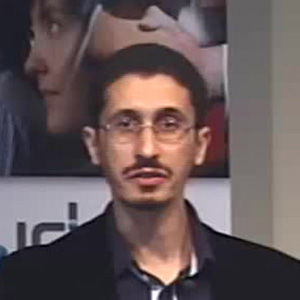
Mohamed Chetouani
Institute for Intelligent Systems and Robotics
University Pierre and Marie Curie, Paris, France
(mohamed.chetouani at upmc.fr)
Mohamed Chetouani is the head of the IMI2S (Interaction, Multimodal Integration and Social Signal) research group at the Institute for Intelligent Systems and Robotics (CNRS UMR 7222), University Pierre and Marie Curie-Paris 6. He received the M.Sc. degree in Robotics and Intelligent Systems from the UPMC, Paris, 2001. He received the PhD degree in Speech Signal Processing from the same university in 2004. In 2005, he was an invited Visiting Research Fellow at the Department of Computer Science and Mathematics of the University of Stirling (UK). Prof. Chetouani was also an invited researcher at the Signal Processing Group of Escola Universitaria Politecnica de Mataro, Barcelona (Spain). He is currently a Full Professor in Signal Processing, Pattern Recognition and Machine Learning at the UPMC. His research activities, carried out at the Institute for Intelligent Systems and Robotics, cover the areas of social signal processing and personal robotics through non-linear signal processing, feature extraction, pattern classification and machine learning. He is also the co-chairman of the French Working Group on Human- Robots/Systems Interaction (GDR Robotique CNRS) and a Deputy Coordinator of the Topic Group on Natural Interaction with Social Robots (euRobotics). He is the Deputy Director of the Laboratory of Excellence SMART Human/Machine/Human Interactions In The Digital Society.
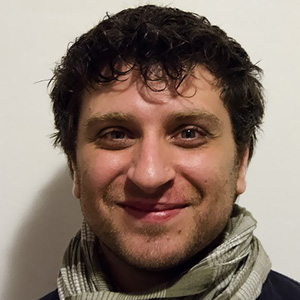
Salvatore M. Anzalone
Institute for Intelligent Systems and Robotics
University Pierre and Marie Curie, Paris, France
(anzalone at isir.upmc.fr)
Salvatore Anzalone received his B.S. in Computer Engineering (2004) and M.Sc. degree in Intelligent Systems (2006) from the University of Palermo. From the same University he received his Ph.D. degree in Computer Engineering (2010), guided by Prof. A. Chella and Prof. R. Sorbello. He cooperated with Prof. H. Ishiguro at the Osaka University during one year of his Ph.D. (2009) and during his post-doc year at University of Padova (2010), guided by Prof. E. Pagello and Prof. E. Menegatti. He received a grant from the Japan Society for the Promotion of Science and from April 2011 to April 2012 was research fellow at the Intelligent Robotics Laboratory directed by Prof. H. Ishiguro at Osaka University (2011-2012). From May 2012 to February 2015 he was a Post-Doc researcher at University Pierre et Marie Curie in Paris, France, working with Prof. M. Chetouani at the Institute for Intelligent Systems and Robotics (ISIR-UPMC). In November 2013 he visited again the Osaka University thanks to a grant received by the Japan's National Institute of Information and Communications Technology. Now he is research engineer at the Child and Adolescent Psychiatry Service of Pitié-Salpêtrière Medical Hospital directed by Prof. D. Cohen. His research focuses on Personal Robots, in particular on the modeling of human's identities and behaviours, to give to the robots the ability of interacting with humans in a more strict, customized and reliable way. Last experiences at ISIR-UPMC in Paris involve the use of personal robots for autistic children in the FP7 European Project Michelangelo.
 Giovanna Varni
Giovanna Varni
Institute for Intelligent Systems and Robotics
University Pierre and Marie Curie, Paris, France
(varni at isir.upmc.fr)
Giovanna Varni received the M.Sc. Degree in biomedical engineering and the Ph.D. in electronic, computer, and telecommunications engineering from University of Genoa, Italy, in 2005 and 2009, respectively. Since 2009, she has been a postdoctoral research assistant at DIBRIS-InfoMus Lab, University of Genoa. At the present, she is a postdoctoral research assistant at the IMI2S (Interaction, Multimodal Integration and Social Signal) research group at the Institute for Intelligent Systems and Robotics (CNRS UMR 7222), University Pierre and Marie Curie-Paris 6. Her research interests are in the area of human-computer interaction, especially focusing on social signals analysis, expressive gesture. She was involved in the FP7 EU-ICT STREP SAME Project (Sound and Music for Everyone Everyday Everywhere and Every way) on active music listening, FP7 EU-ICT STREP MIROR (Musical Interaction Relying On Reflexion, 2010-2013), FP7 EU-FET SIEMPRE (Social Interaction and Entrainment using Music PeRformance Experimentation, 2010-2013.
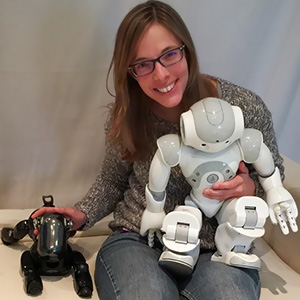
Isabelle Hupont Torres
Institute for Intelligent Systems and Robotics
University Pierre and Marie Curie, Paris, France
(hupont at isir.umpc.fr)
Isabelle Hupont Torres received a B.Sc. degree in Telecommunications Engineering in 2006, a M.Sc. degree in Computer Science in 2008 and a Ph.D. degree in Computer Science in 2010 from the University of Zaragoza (Spain). During the last 8 years, she has participated in more than 30 R&D projects related to multimodal affective computing, human-machine interaction, Quality of Experience and Ambient Assisted Living. Her research focuses on the enhancement and humanization of human-machine interaction through the use of computer vision and artificial intelligence techniques. Since 2015, she is working as a postdoc researcher at Pierre and Marie Curie University (Paris, France), bridging the gap between interpersonal synchrony and affective computing.
 Ginevra Castellano
Ginevra Castellano
Department of Information Technology
Uppsala Universitet, Uppsala, Sweden
(ginevra.castellano at it.uu.se)
Dr. Ginevra Castellano is an associate senior lecturer in the intelligent interactive systems at the Division of Visual Information and Interaction of the Department of Information Technology of Uppsala University, Sweden. Her research interests lie at the crossroads of affective behavioral computing and social robotics, and include the automatic analysis and recognition of human non-verbal behavior for adaptive human-computer and human robot interaction. She has published more than 50 research articles on these topics. She is the coordinator of the EU FP7 EMOTE (EMbOdied-perceptive Tutors for Empathy-based learning) project (2012-2015). She is also co-investigator of the EU FP7 IlearnRW (Integrated Intelligent Learning Environment for Reading and Writing) project (2012-2015). She is a member of the management board of the HUMAINE Association; co-founder and co-chair of the AFFINE (Affective Interaction in Natural Environments) workshops; co-editor of special issues of the Journal on Multimodal User Interfaces and the ACM Transactions on Interactive Intelligent Systems; Program Committee member of several international conferences, including ACM/IEEE HRI, ACM ICMI, IEEE SocialCom, AAMAS, IUI, ACII.
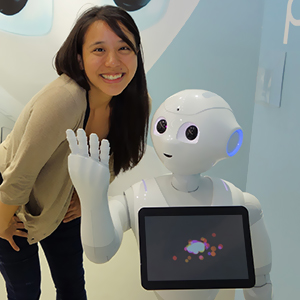 Angelica Lim
Angelica Lim
SoftBank Robotics Europe, Paris, France
(alim at aldebaran.com)
Angelica Lim received her B.Sc. in Computing Science from Science Fraser University, and her Masters and Ph.D. in Informatics from Kyoto University. She currently is a Software Engineering Manager within the NAOqi Interaction SDK department for Aldebaran Robotics, developing the humanoid robot Pepper. Her research interests include human-robot interaction, signal processing, emotion recognition, expression and modelling, and developmental robotics. She is also a journalist for the IEEE Spectrum Robotics Automaton Blog.
Gentiane Venture
GV Lab
Tokyo University of Agriculture and Technology, Tokyo, Japan
(venture at cc.tuat.ac.jp)
Gentiane Venture has completed an Engineer's degree from the Ecole Centrale of Nantes (France) in 2000 in Robotics and Automationand a MSc from the University of Nantes (France) in Robotics. In 2003, she obtained her PhD from the University of Nantes (France). In 2004 she joined the French Nuclear Agency (Paris, France), to work on the control of a tele-operated micro-manipulator. Later in 2004 she joined Prof. Yoshihiko Nakamura's Lab. at the University of Tokyo with the support of the JSPS. In 2006, still under Prof. Nakamura, she joined the IRT project as a Project Assistant Professor. In March 2009, she becomes an Associate Professor and starts a new lab at the Tokyo University of Agriculture and Technology. Her main research interests include: Human behavior understanding from motion, Human body modelling, Dynamics identification, Control of robot for human/robot interaction, Human affect recognition.
Program Committee
- Sofiane Boucenna, ETIS laboratory ENSEA/UCP/CNRS Cergy-Pontoise, Fr
- Justine Cassell, Carnegie Mellon University, USA
- Mathieu Chollet, USC Institute for Creative Technologies, USA
- Chloé Clavel, CNRS-LTCI, Telecom-ParisTech, Université Paris-Saclay, Fr
- Alberto Finzi, Università degli Studi di Napoli "Federico II", It
- Beata J. Grzyb, Radboud University, Nl
- Sooyeon Jeong, MIT Media Lab, USA
- Radoslaw Niewiadomski, University of Genoa, It
- Sandra Baldassarri, University of Zaragoza, Es
- Eva Cerezo, University of Zaragoza, Es
- Javier Marco, Escuela Superior de Diseño de Aragón, Es

